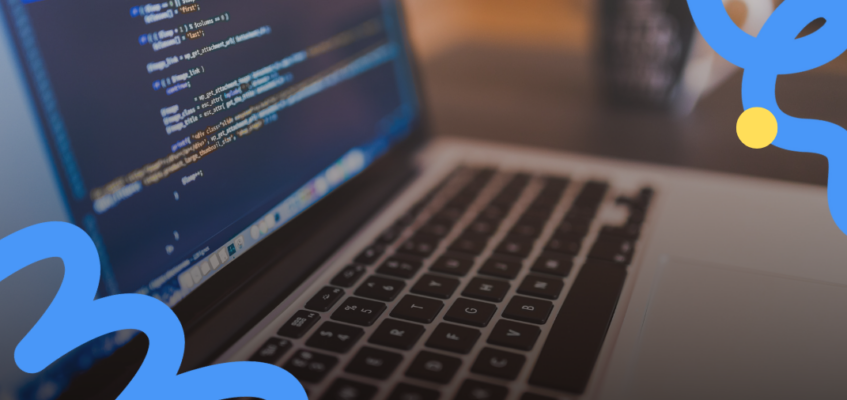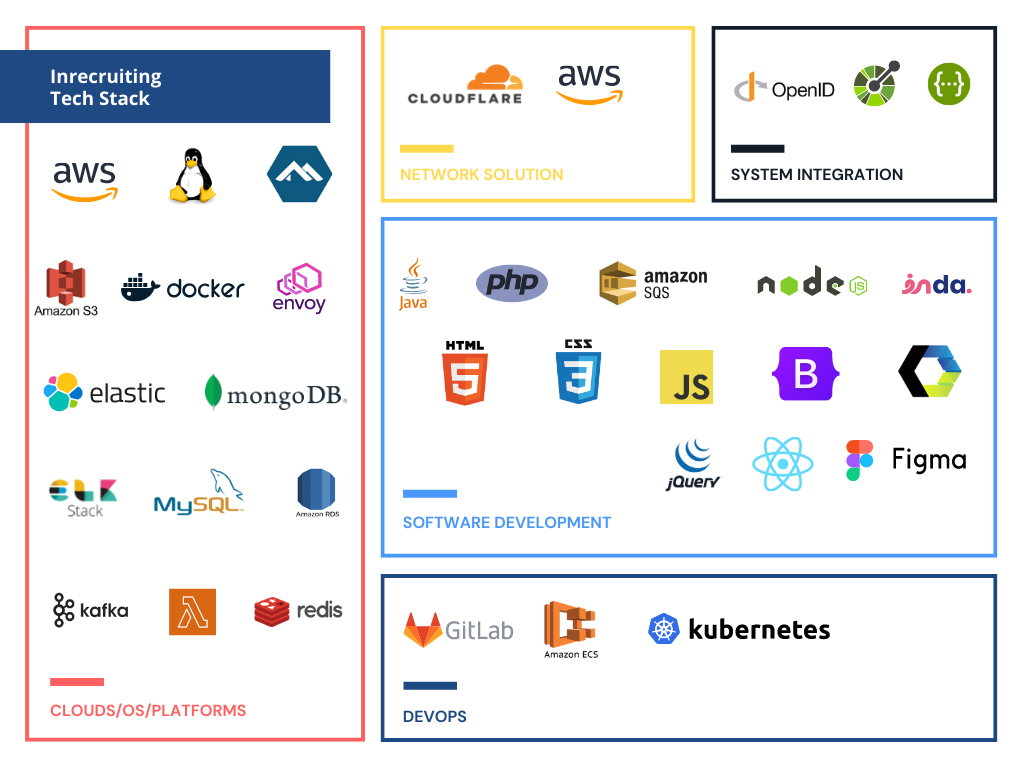
The technological evolution of Inrecruiting
From 2009 to the present, the growth and continuous updating of our technology stack have made the Inrecruiting Applicant Tracking System one of the most comprehensive and well-known recruiting software not only in Italy but also abroad. Let us review in this article the highlights of the technological development of our ATS.
Tech stack: what is meant
What we usually call technology stack or tech stack is nothing but the set of technologies used, in a company or other context, to build and develop a web, desktop or mobile service or application. These technologies certainly include programming languages, frameworks, libraries, frontend and backend tools, APIs, etc.
Building one’s technology stack and choosing which technologies to use is a very important decision that brings attention to aspects related to performance, documentation, the presence of a supporting community, or even cost-effectiveness. On these factors depends the choice of technology as well as:
- the quality and life cycle of the developed product
- the way the development team works
- the ability to meet customer needs
Inrecruiting’s technology stack
In recent years, the growth of the IT team and the expansion of the technology stack have ensured the optimization of the ATS Inrecruiting software.
To date, we count about 15 programmers within our development team and we are always looking for new Web Developers (Backend Developer, Frontend Developer, etc.) to join our team.
>> Check out all of our open positions.
Thanks to their work, and with a technology stack that is always up-to-date, we work on continuously updating the ATS, refining the software architecture, and improving its GUI.
Currently, our technology stack includes several technologies. Here is a complete overview:

The technological history of Inrecruiting
Reviewing the history of Inrecruiting, here are some highlights and architectural changes that have marked the technological evolution of our software.
The first steps

In 2008, we began developing Inrecruiting from the ground up. To build a solid architecture, we made use of technologies that have remained the foundation of our tech stack over the years.
- Programming languages for creating the application backend (mainly PHP 5)
- HTML, CSS, JavaScript with JQuery library for the creation of the frontend
- a client-server for managing access, data and resources
The turning point: the move to the cloud and AWS

The migration to the cloud and the move to AWS was a time of real technological turning point.
This was not only the period of the introduction of AWS (Amazon Web Services) and the porting of data and infrastructure to the cloud, but also that of the upgrade to PHP 7 (which took place in 2016) and a major backend refactoring effort that allowed the transition from a statefull to a stateless version of the application.
At this time of great technological evolution, we also added new technologies to our tech stack:
- GitLab and GitLab CI/CD
- EC2 clusters (for web servers), ECS, Kubernetes
- RDS in high availability (for MySQL)
- Redis (user sessions)
- ELK stack (Elasticsearch, Logstash, Kibana)
- SQS queues
- centralization of application and system logs (ELK)
- Bootstrap (CSS framework)
The evolution: Microservices and SES

In 2021, the technological status of Inrecruiting entered a new evolutionary phase. This time the change affected the software architecture and resulted in a shift from a monolithic application to one with a microservices architecture.
As independent services that communicate with each other via API, Inrecruiting’s microservices are written in PHP, Node.js and Java and are processed on Fargate and AWS Lambda (Serverless).
There was also a big change on the communication front with the implementation of Amazon SES (Simple Email Services) cloud service for sending and receiving massive emails.
The new look: the graphic restyling

From the frontend perspective, an important milestone in the history of Inrecruiting is marked by the graphic restyling of the application that took place at the same time as the launch of the new brand identity in 2022.
The work done on the frontend of Inrecruiting involved the redesign of the graphical interface but also placed the focus on the User Experience and User Interface of the software. In this way, we improved the usability of the ATS for our customers by making the interface more intuitive and in line with the new corporate visual identity. Just on this occasion, the development team introduced the use of specific software for creating user interfaces such as Figma.
Future outlook

In recent times, we have focused our interest on GDPR policies, corporate, infrastructure and technical security standards. Alongside ISO 9001 and ISO 27001 certifications, implementation of technologies such as WAF (Web Application Firewall) for better protection of managed data, we have remarked on our commitment to a cleaner and more up-to-date programming style, which has also resulted in the transition of the application backend to PHP version 8.2. This was a particularly challenging refactoring job, both because of the amount of code involved and because of the language-related difficulties (many parts were removed after being deprecated, others had changed signatures, and in addition, strong language typing was introduced).
The recent study of ReactJS as a frontend framework is part of the ongoing updates to improve our technology stack.

Digital Marketing presso Inrecruiting